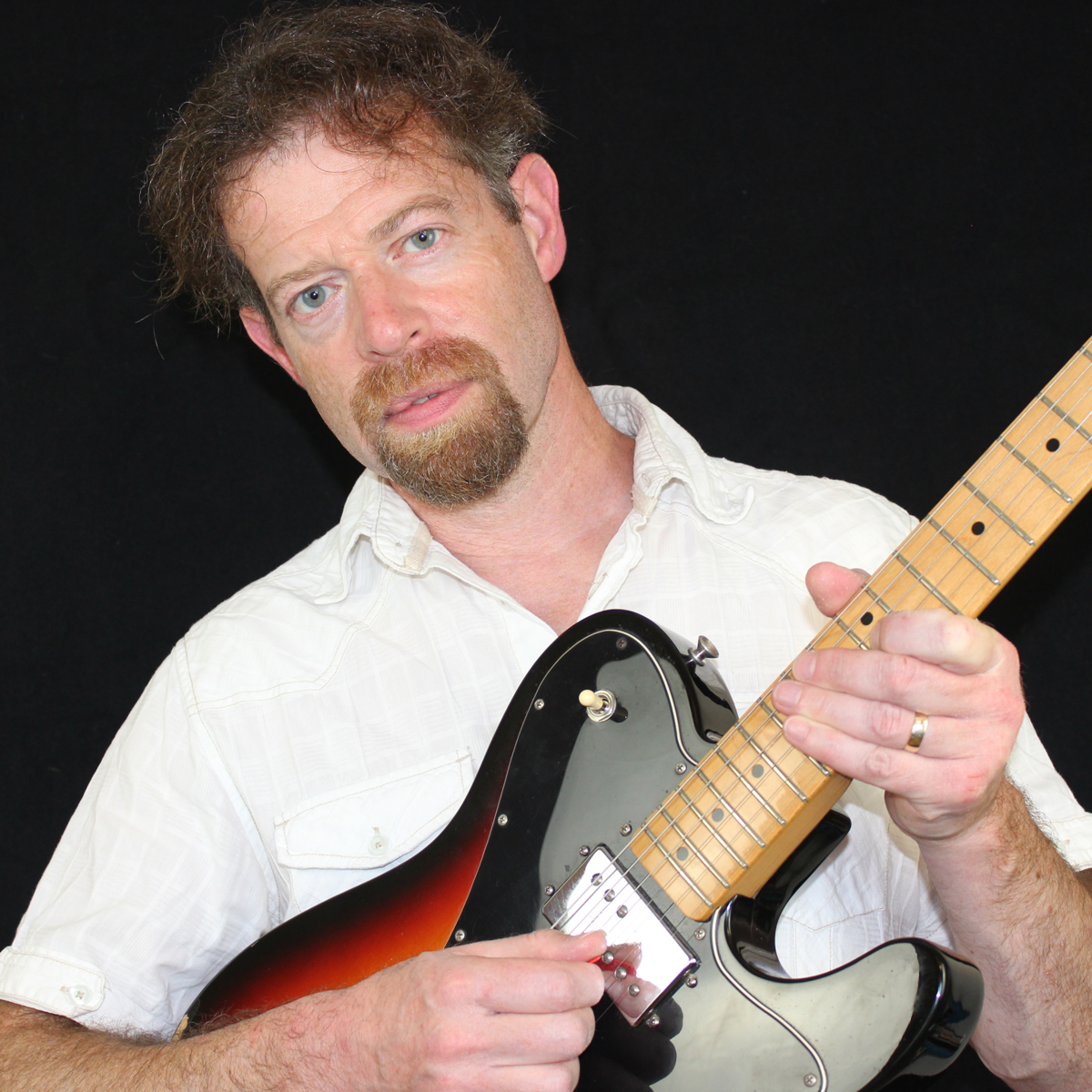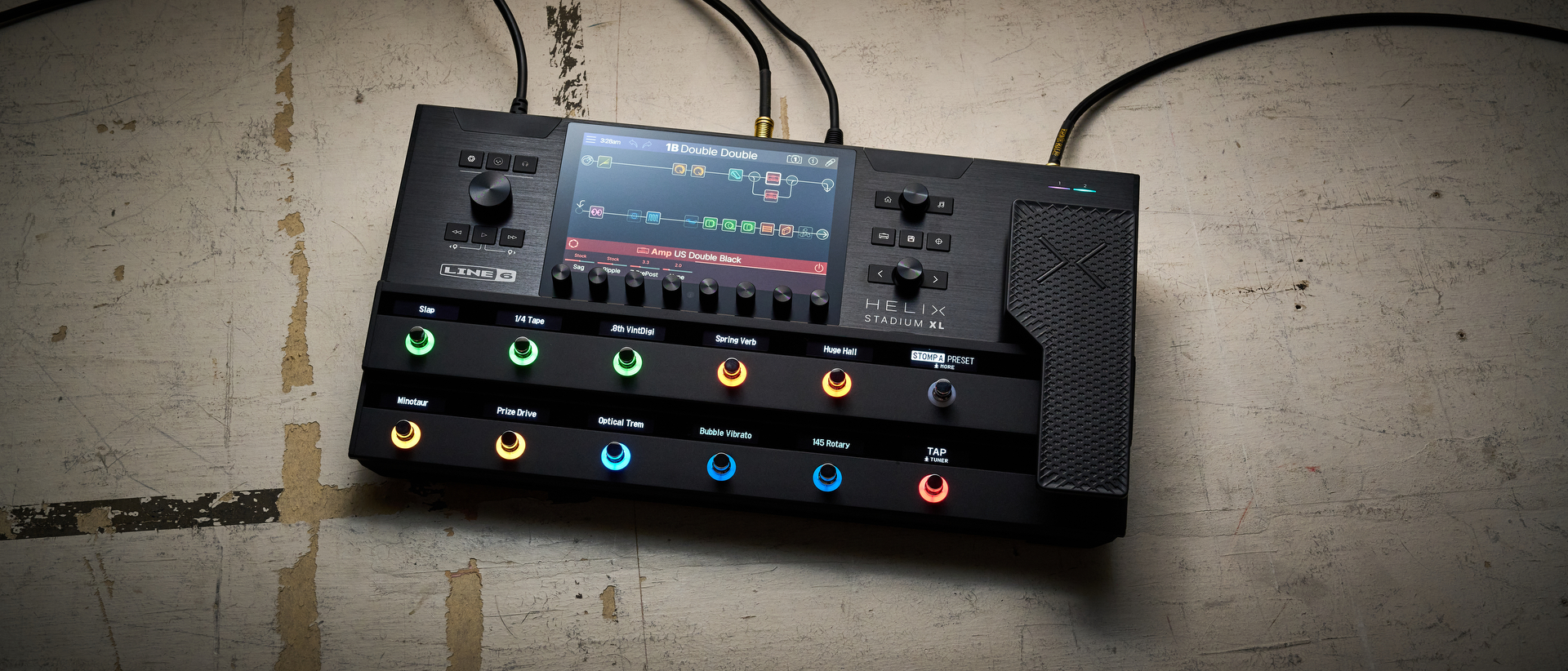Build a whole new lickbag with our country-blues masterclass – featuring licks inspired by Dickey Betts, Albert Lee and Brent Mason
Learn how you can mix major and minor pentatonics, and add extra notes to give your solos a wide open space to roam in, with this deep dive into country-blues guitar

In this feature we’re going to look at how to get some country-blues flavor into your playing.
Listening to iconic country-rock bands such as The Allman Brothers, The Flying Burrito Brothers and Eagles, legendary players like Joe Walsh, Don Felder, Dickey Betts, Clarence White, Glen Campbell, Albert Lee, and Ray Flacke, and – more recently – Brent Mason, Vince Gill, Keith Urban, and Tom Bukovac, will give you an idea of how these guitarists combine classic blues sounds with a more country flavor.
If you’re familiar with blues, you will doubtless be aware of how we use the Minor Pentatonic scale (R-b3-4-5-b7) as a basis for much of the classic vocabulary, but when we play country music, much of our vocabulary comes from the Major Pentatonic scale (R-2-3-5-6).
This is because so many country songs are based firmly in a Major tonality, so the notes that make up a Major chord (R-3-5) are represented in the scale. Playing licks from this scale will give a prettier, happier sound, and when we incorporate stylistic techniques such as pedal steel-style string bends, double-stops etc, we're going to start to sound ‘country.’
Sometimes though, that overtly happy sound can be too much, or not ideal, especially when we want to sound a bit more bluesy or rocky, so in these instances we need to create licks and phrases that bounce between Major and Minor Pentatonic scales and ones that mix notes from both of them in one phrase. Doing this well will give us that country sound and approach but mixed with blues – the best of both worlds!
If you look at both of these scales combined into one, you get the following notes: R-2-b3-3-4-5-6-b7, which is a hybrid scale of Minor and Major Pentatonic. Furthermore, if you add the b5th interval that we find in the Minor Blues scale (R-b3-4-b5-5-b7), you incorporate an even more bluesy element. Additionally, if you remove the b3 from the hybrid scale, you get the notes of the Mixolydian mode (R-2-3-4-5-6-b7).
All of these scale-based approaches can give us a seemingly endless combination of potential note choices. But looking at it this way can also seem rather daunting. So a good way to approach it is by doing a lot of listening and learning of solos, licks, and lines that incorporate these various combinations, analyzing the origin of the various notes along the way. It won’t take long for you to start playing this way instinctively, and this in turn will help you to develop your own ideas.
All the latest guitar news, interviews, lessons, reviews, deals and more, direct to your inbox!
To this end, we have five exercises which layer the different Major intervals (2nd-3rd-6th) onto Minor Pentatonic phrases, and also mix Major Pentatonic and Mixolydian tonalities, to give you an idea of how these note combinations create different sounds. In addition, there are two mini pieces to learn, one mid-paced and the other more uptempo, to which I’ve given a country flavored blues-rock vibe.
Take your time with the examples, absorb the ‘sound’ of the licks, hear where the key notes of R-3-5-b7 are, note how the phrases are structured, and the various country-style articulations employed to create them. Do so and pretty soon you’ll be developing your own country-blues vocabulary. Have fun!
Get the tone
Amp Settings: Gain 6, Bass, 4, Middle 6, Treble 6, Reverb 4
Single-coil pickups will give a cleaner, more traditional country approach, with perhaps a little compressor pedal to add sustain and smooth out the sound. A humbucking guitar is better for heavier country-rock, where more overdrive is required. A fixed bridge guitar will avoid tuning discrepancies when playing two strings where one is held bent. Add reverb or delay.
Exercises
Exercise 1.
[Bars 1-2] This is a standard blues lick based on the D Minor Pentatonic scale (D-F-G-A-C). Make sure the tone interval bend on the second string is accurately pitched.
[Bars 3-4] This lick is similar to the previous one, except that it introduces the Major 3rd (F#) note (11th fret, third string and 9th fret, fifth string).
Exercise 2.
[Bars 1-2] This country-blues lick adds the Major 3rd but also the b5th ‘blue note’ (13th fret third string and 11th fret, fifth string) from the D Minor Blues scale (D-F-G-Ab-A-C), which adds a more bluesy sound. [Bars 3-4]
Make sure the third-string tone bend on beat 1 is accurately pitched in order to appreciate the difference between this, and the subsequent b5th note on beat 3. Getting these articulations spot on is what country-blues playing is all about.
Exercise 3.
These phrases add the Major 6th (B note in D) to the blues licks, in addition to the Major 3rd and b5th. The 3rd and 6th can be borrowed from the Major Pentatonic scale (R-2-3-5-6), but also from the Mixolydian mode (R-2-3-4-5-6-b7), especially when used in conjunction with the b7th (C note in D).
Exercise 4.
[Bars 1-2] This lick has a more noticeable country flavor because it uses a D Major Pentatonic (D-E-F#-A-B) tonality. The b3rd to Major 3rd move gives a bluesy vibe.
[Bars 3 -4] The scalic movement descending from the Major 2nd (E note) to the root note (D), going through the b7th (C) and 6th (B) to the 5th (A note) on beats 1 and 2, gives a definite D Mixolydian mode (D-E-F#-G-A-B-C) sound. The following b5th and b3rd going to Major 3rd again keeps things bluesy.
Exercise 5.
[Bars 1-2] This distinctly country sounding phrase uses a mainly D Major Pentatonic and mimics the kind of lick of a pedal steel guitar could play. Use your fretting-hand’s fourth finger on beat 3 to hold down the top two strings at the 10th fret, while the third finger pre-bends the third string a tone at the 9th fret, then lets it down.
Let all three strings ring. [Bars 3 -4] This Mixolydian line with the familiar b5th and b3rd to Major 3rd move keeps the bluesy flavor.
Mid-Tempo Piece – Rhythm
[Bars 1-8] Play the appropriate blues shuffle rhythm for each chord, and feel free to use fretting-hand muting to add percussive scratches and rhythmic interest, especially after the third beat of each bar. Aim to keep the timing locked in tight to maintain a good groove.
[Bars 9-16] The technical approach changes here to one of arpeggiating chords. Again, keep the timing accurate and let the notes ring together to keep things flowing and fluent.
Mid-tempo piece – Solo
[Bars 1-8] These bars mix notes of D Minor Pentatonic (D-F-G-A-C) and D Mixolydian (D-E-F#-G-A-B-C) to create some tasty country-blues sounds. Note the quick use of the b5th (Ab) from the D Minor Blues scale (D-F-G-Ab-A-C) in bar 8.
[Bar 11] This triplet phrase uses a chromatic line from a ‘hybrid’ scale of D Minor Blues and Mixolydian (R-2-b3-3-4-b5-5-6-b7). The chromatic ascent from b3rd-5th is widely used in country, blues and jazz. [Bar 12] This country bend marks the A chord using the A Major Pentatonic scale (A-B-C#-E-F#).
[Bar 13] For this tricky lick, bend the first string ,15th fret (G) up a full tone to the 17th fret (A) but then re-pick it a semitone lower (Ab). This necessitates some very accurate pre-bending of the string, so make sure you listen carefully.
Up-tempo Piece – rhythm
The technical approach to this rhythm part requires that it’s played with a good degree of timing accuracy due to the overall tempo. You can sparingly add some fretting-hand muted scratches to enhance the groove, but don’t overcrowd it.
Approach relatively lightly, with an eighth-note framework (downstroke on the beat, upstroke on the off beat) and with a bounce so the whole sounds rhythmic, even when playing the single-string connecting notes seen in bars 4, 7, and 14.
Up-tempo Piece – Solo
[Bars 1-6] These phrases are based on mixing notes taken from the A Minor Pentatonic (A-C-D-E-G) and A Major Pentatonic (A-B-C#-E-F#) scales, but as in the lick in bar 3, can also be looked at as being from A Mixolydian (A-B-C#-D-E-F#-G), as we have a descending line going from the b7th (G note) through the 6th (F#), 5th (E), and 4th (D).
[Bars 7-8] This typical country bend marks the E chord here, and uses the root, 2nd, 3rd, 4th, and 5th from the E Mixolydian scale (E-F#-G#-A-B-C#-D). Ensure the second-string bend remains accurately at pitch before it descends. This almost ‘mechanical’ bending style is typical of country guitar.
Andy Saphir has been a professional guitar player and teacher for over 25 years. Graduating with distinction from London’s prestigious Guitar Institute in 1995, he has gone on to gain a reputation as one of the UK’s top country guitarists. Specialising in country and blues, Andy is a versatile, multi-genre player and has a successful international performing career, touring with numerous shows and bands, including the Blues Brothers Approved. Andy taught on the guitar faculty at London’s ICMP for many years, and is a longtime contributor to Guitar Techniques Magazine, as well as being a Jam Track Central artist. Andy teaches in-person guitar lessons from Cambridgeshire UK, or remotely globally.


